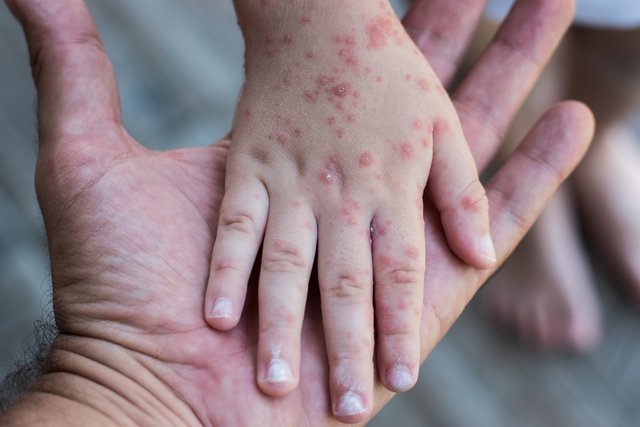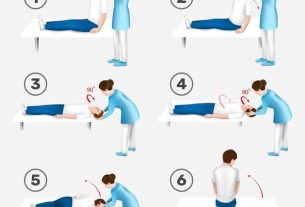The main symptoms of rubella are itchy red spots on the skin, general malaise, enlarged neck glands, headache, cough, sneezing, nasal discharge, eye irritation and fever.
The first symptoms of rubella can be confused with the flu, as they are more general symptoms, however they progress quickly, and it is important that an infectious disease specialist, general practitioner or pediatrician is consulted.
The symptoms of rubella during pregnancy and in babies who were infected after birth are the same as those seen at any stage of life. However, when the mother is infected during pregnancy, the baby’s development may be affected. Find out more about rubella during pregnancy.

Main symptoms
The main symptoms of rubella are:
- Fever up to 38ºC;
- Nasal secretion and sneezing;
- Cough;
- Headache;
- Bad being;
- Enlarged lymph nodes, especially near the neck;
- Eye irritation, which becomes redder;
- Red spots on the skin that cause itching.
Symptoms of rubella can appear 12 to 21 days after infection with the virus and the phase with the greatest risk of contagion involves the 7 days before the spots appear on the skin and last up to 7 days after they appear.
How to know if it’s rubella
The initial diagnosis of rubella is made by observing the signs and symptoms presented by the person, in addition to requesting a blood test to check the presence of antigens or antibodies formed against the rubella. Rubiviruswhich causes Rubella, and the test is known as IgG for rubella.
This test, in addition to allowing us to know whether the person is infected with the rubella virus, also helps to know whether the person has been immunized against this virus or not, and it is important that it is carried out together with the IgM measurement for rubella. Find out more about the IgG test for rubella.
Make an appointment with your nearest doctor to investigate the possibility of rubella:
Taking care of your health has never been easier!
How the treatment is carried out
Treatment for rubella must be carried out according to the doctor’s instructions and aims to promote symptom relief, and the use of analgesic medications, rest and hydration may be indicated so that the person recovers faster, in addition to being important that stay isolated to avoid transmitting the disease to other people.
Children born with congenital rubella must be monitored by a team of doctors, because there are several complications that may be present. Therefore, in addition to the pediatrician, children should be seen by specialists and physiotherapists who can help with their motor and brain development. See more details on rubella treatment.
Bibliography
- PAN AMERICAN HEALTH ORGANIZATION. Rubella-free semi-arid. Available at: <https://www.paho.org/bra/index.php?option=com_docman&view=download&alias=731-semi-arido-livre-da-rubeola-1&category_slug=malaria-972&Itemid=965>. Accessed on April 29, 2021
- MINISTRY OF HEALTH OF PARANÁ. Rubella and congenital rubella syndrome. 2020. Available at: <https://www.saude.pr.gov.br/print/pdf/node/413>. Accessed on April 29, 2021
- BOSTON PUBLIC HEALTH COMMISSION. Rubella. 2015. Disponível em: <https://www.bphc.org/whatwedo/infectious-diseases/Infectious-Diseases-A-to-Z/Documents/Fact%20Sheet%20Languages/Rubella/Portuguese.pdf>. Acesso em 29 abr 2021

Sign up for our newsletter and stay up to date with exclusive news
that can transform your routine!
Warning: Undefined array key "title" in /home/storelat/public_html/wp-content/plugins/link-whisper-premium/templates/frontend/related-posts.php on line 12
Warning: Undefined array key "title_tag" in /home/storelat/public_html/wp-content/plugins/link-whisper-premium/templates/frontend/related-posts.php on line 13




